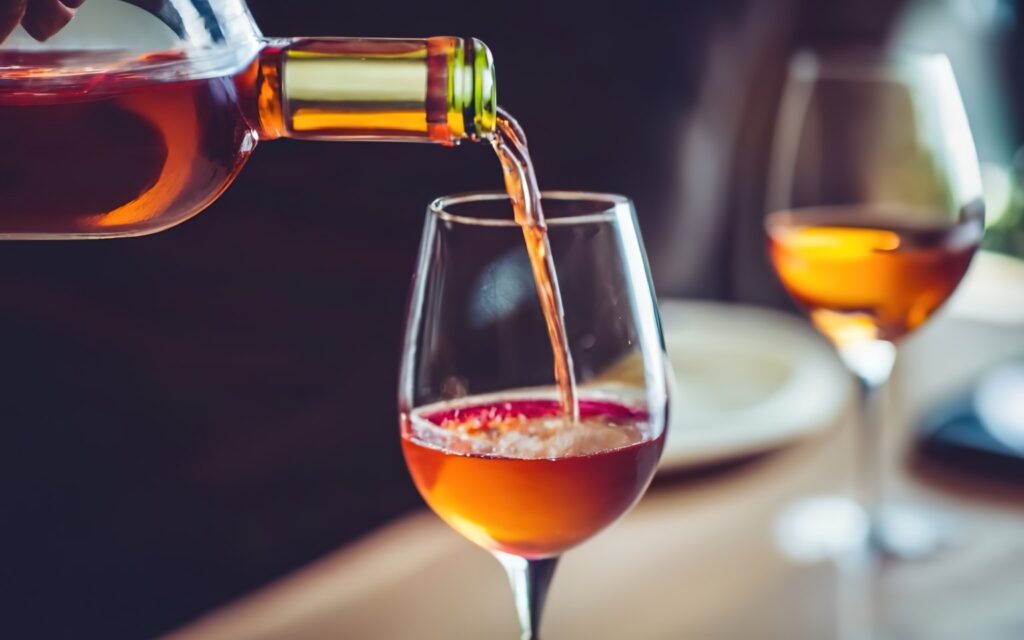
Orange wine is a type of wine made by fermenting white grape juice in contact with its skins for an extended period. This process is similar to how red wines are made, but it’s applied to white grapes. The extended skin contact gives the wine its characteristic orange or amber hue.
The practice of making wine in this manner dates back thousands of years, with origins in the Caucasus region, particularly in countries like Georgia. In recent years, orange wines have seen a resurgence in popularity, especially among enthusiasts of natural and biodynamic wines.
Taste-wise, orange wines are known for their robust and complex flavour profiles. They often have notes of dried fruits, nuts, and hay, combined with a tannic structure more commonly associated with red wines. The texture can be described as grippy or chewy and the wines often have a pronounced acidity.













